Meowza! Nothing draws your attention like an adorable orange cat.
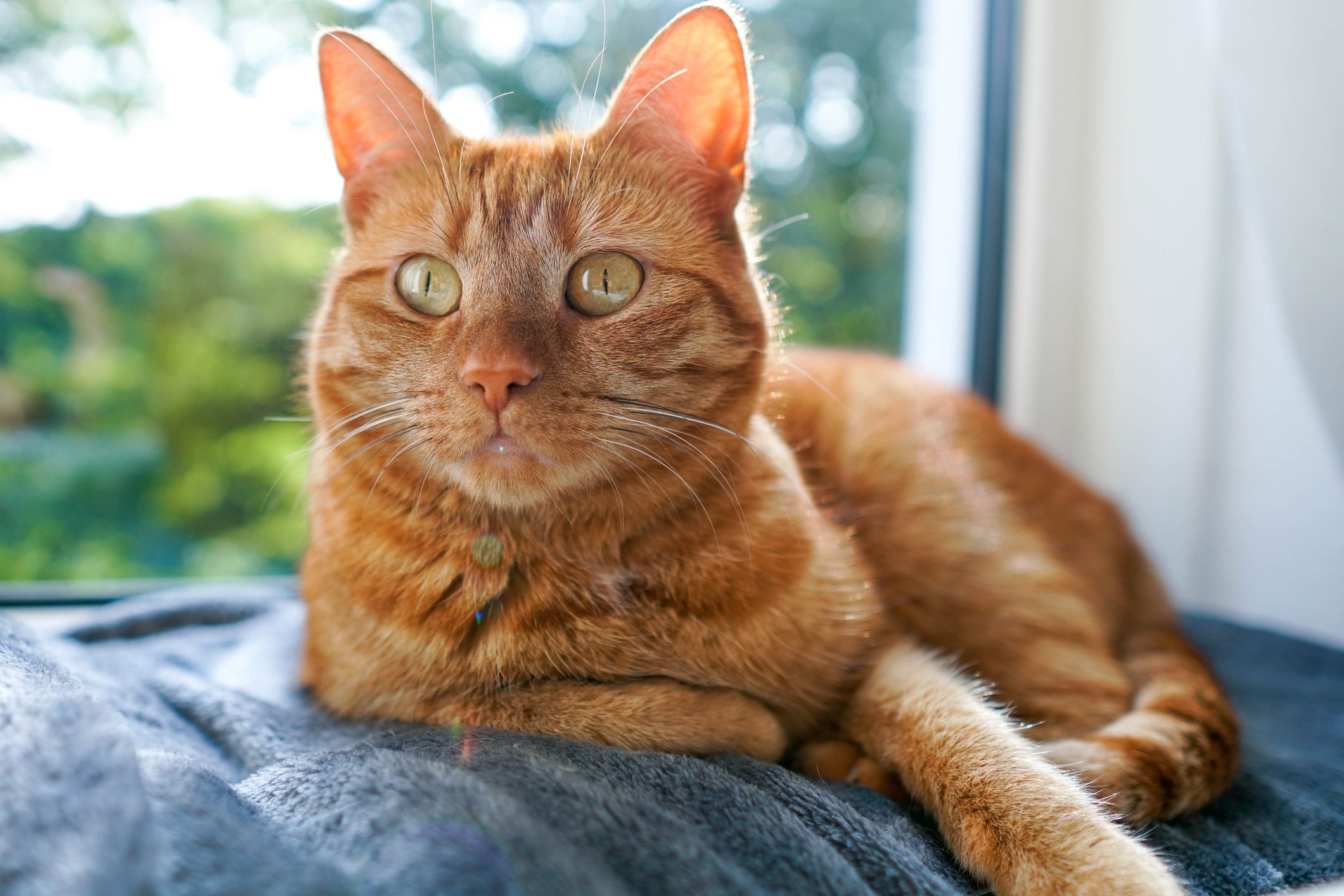
12 Orange Cat Breeds That Have Head-Turning Coats

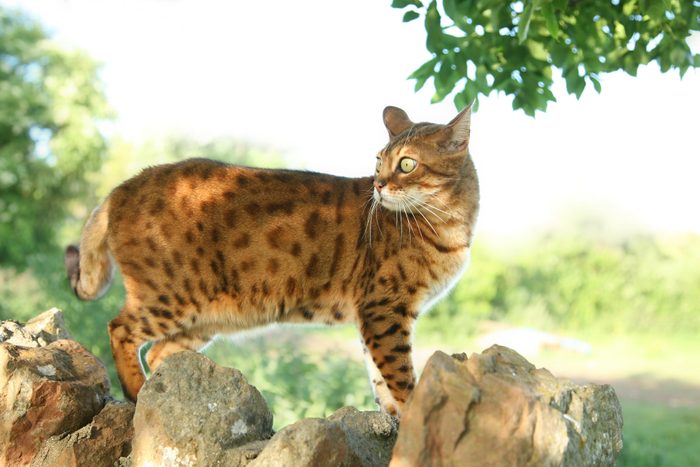
Bengal
With a striking coat that makes it look like a leopard or jaguar, it’s no wonder the Bengal elicits oohs and ahhs from adoring fans and onlookers. It’s the only domestic cat breed that has the trademark rosettes. “They are technically a hybrid cat, meaning they are the offspring of a domestic cat bred with a wildcat, the Asian leopard cat,” says Delgado.
Unlike its wildcat cousin, the Bengal craves interaction with its humans and will love the family dog as much as you do. Bengals have a silky, plush coat with a muscular and athletic physique. They have loads of energy, and they love to play fetch, walk on a leash and even take a dip in the lake! “They are the best fit for a home that has lots of time to give them,” says Delgado.
| Breed overview | Bengal |
| Height | 8–10 inches |
| Weight | 8–16 pounds |
| Life expectancy | 12–16 years |

American Shorthair
American Shorthairs come in a variety of colors, from classic black and white to striking blue. But one of the most popular and recognizable shades? The orange tabby! Technically, in the world of cat genetics, this color is called “red.” It comes from the O (orange) gene, which transforms black pigment into warm, reddish tones, giving these orange cat breeds their signature fiery look.
But beyond their gorgeous coats, American Shorthairs are loved for their easygoing, affectionate and adaptable nature—making them great for families with kids. Plus, their sleek and short coat is super low-maintenance—no fancy grooming required.
| Breed overview | American Shorthair |
| Height | 8–10 inches |
| Weight | 6–15 pounds |
| Life expectancy | 15–20 years |
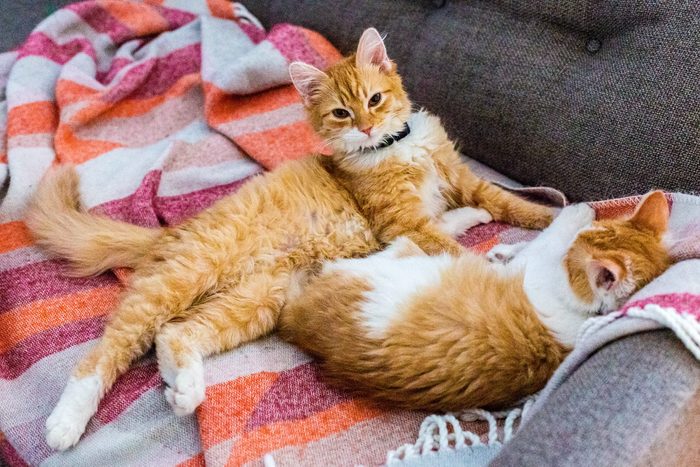
Turkish Van
The Turkish Van may be famous for its striking “Van pattern”—a mostly white coat with touches of color on the head and tail, but some also come in gorgeous shades of orange and white. These orange cat breeds can have markings that range from deep auburn to soft cream. Personality-wise, they can be playful and affectionate and different than nearly every other type of cat, the Turkish Van actually likes water and is also known to swim. So, if you’re a first-time cat owner, a Turkish Van could be a great match! And despite their semi-long fur, their silky coat is naturally resistant to matting, so a simple weekly brushing is all they need to stay looking sleek and beautiful.
| Breed overview | Turkish Van |
| Height | 9–11 inches |
| Weight | 7–20 pounds |
| Life expectancy | 12–17 years |
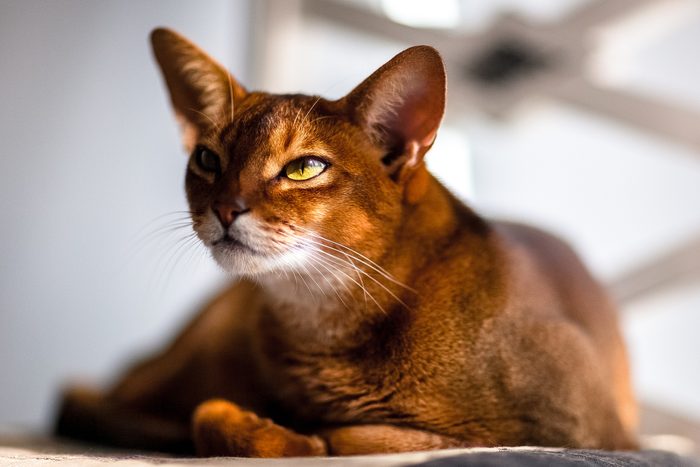
Abyssinian
“Abys,” which date all the way back to ancient Egypt, are one of the oldest known orange cat breeds. And FYI, you probably won’t find an Aby lounging on a sun-drenched windowsill for hours on end. This orange cat breed is interactive and known for being very active. “Abyssinians are excellent candidates for training to do tricks. Fast and agile, they’ll easily leap to heights of 6 feet to nab a wand toy,” Delgado says. “They will need lots to keep them busy, such as food puzzles and interactive playtime.”
And while not a lap cat, per se, they are affectionate and loyal. When they’re not in active pursuit of a game, they’ll spend their downtime studying and taking note of your every move. Don’t be surprised if your Aby starts turning the lights on and off and opening cabinets as a way to “help” you.
| Breed overview | Abyssinian |
| Height | 12–16 inches |
| Weight | 6–10 pounds |
| Life expectancy | 9–15 years |
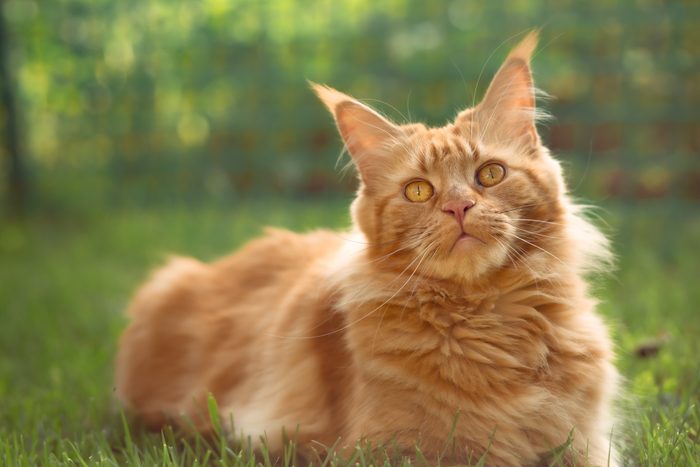
Maine Coon
Fluffy but not stuffy, the Maine Coon is mellow and laid-back. It’s a large cat breed with an equally big heart for loving people. Maybe that’s why it earned the distinction of being named Maine’s state cat. “They have a reputation for being friendly and are often referred to as gentle giants,” says Delgado. But it takes them a while to reach that giant status. “They are slow to mature and not considered full-grown until three to five years old,” she notes.
Ambidextrous, Maine Coons use their paws to scoop up food and water, similar to raccoons. While some cats hate water, that’s not the case for these big kitties. They’re relatively mellow and easygoing, but you might have to fight for shower time when your Maine Coon hears the water running.
| Breed overview | Maine Coon |
| Height | 8–16 inches |
| Weight | 10–25 pounds |
| Life expectancy | 10–13 years |
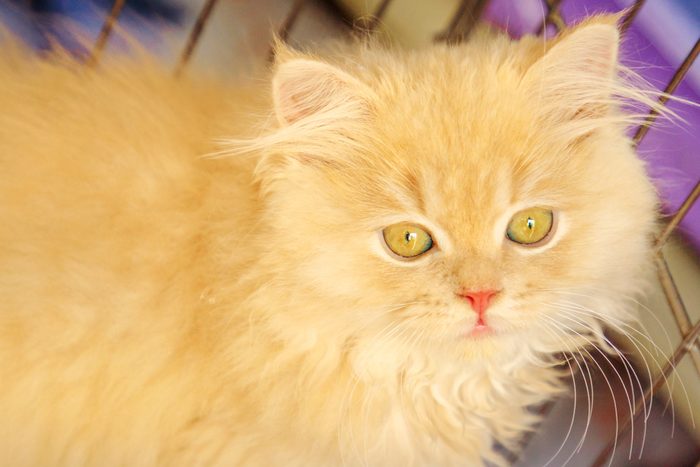
Turkish Angora
Turkish Angoras are known for their silky, soft coats. Delgado says these gorgeous cats are elegant and graceful hosts, often greeting visitors at the door. Their social responsibilities don’t end there, though. Total extroverts, they’ll charm and bring out the smiles of even the stiffest partygoer (even if the guest is a furry one). It’s striking how these cats act like people sometimes—they might even hitch a ride on a person’s shoulders or take a break and stake out the premises from high perches.
And here’s a fun fact: Historically, Turkish Angoras were an all-white breed. They didn’t become an orange cat breed competitor in Cat Fanciers’ Association shows until 1972; before that, only white Turkish Angoras competed for the coveted championship title.
| Breed overview | Turkish Angora |
| Height | 8–10 inches |
| Weight | 5–10 pounds |
| Life expectancy | 15–18 years |
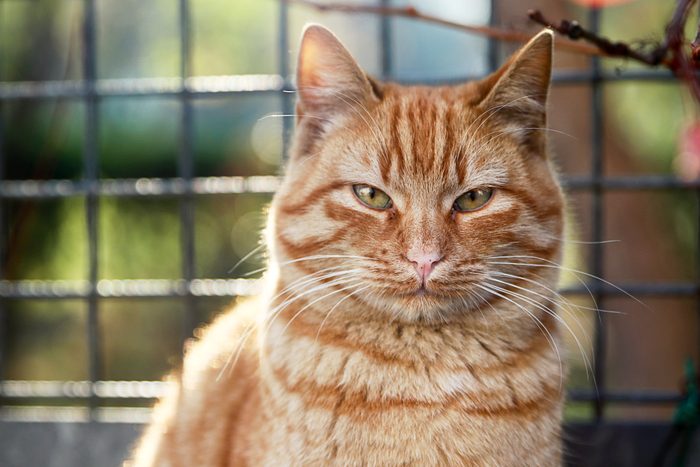
Egyptian Mau
Once you see an Egyptian Mau, you’ll wonder where this rare cat breed has been your whole life. It’s easily mistaken for a Bengal, but these orange cats are smaller. Their telltale spots also arose naturally, without specific breeding for the trait, says Delgado.
Personality-wise, Egyptian Maus dote on their humans and make the most delightful companions. With dog-like characteristics, they greet you at the door, drop a toy at your feet as a subtle hint for playtime and even “talk” to get your attention. “They are known for being very sweet with their family—although some may be wary of unfamiliar people,” says Delgado. If you give them a little time, though, they usually warm up to new human and furry friends.
| Breed overview | Egyptian Mau |
| Height | 7–11 inches |
| Weight | 8–12 pounds |
| Life expectancy | 9–13 years |
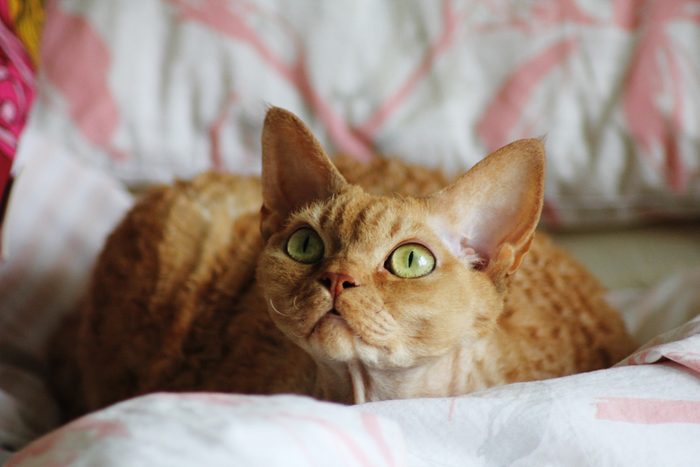
Devon Rex
“These kitties are known for their slim bodies, narrow faces and pointy ears, giving them an endearing pixie-like quality reminiscent of something out of The Hobbit,” says McCarthy. They do hail from Devon, England, after all.
Devon Rexes love to be loved, but they’re more likely to snuggle in between you and the arm of the sofa for a body hug rather than sitting on your lap. It’s a sweet gesture and certainly a sign that your cat trusts you, but the Devon may have an ulterior motive. They may get chilly, since their coat is rather sparse, and they also don’t like to be alone. Still, while they’ll be content to purr and snuggle for a while, they’ll eventually get bored and need some entertainment. The Devon’s mantra is “snuggle hard, play hard.”
| Breed overview | Devon Rex |
| Height | 10–12 inches |
| Weight | 5–9 pounds |
| Life expectancy | 9–15 years |
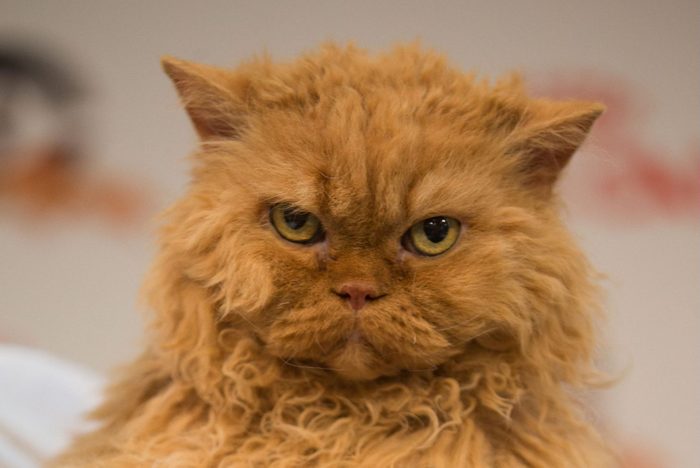
Selkirk Rex
Unlike the Devon Rex, the Selkirk Rex claims no ties to the U.K. (this orange cat breed was the creation of a shelter cat in Montana and a Persian cat), and its body and coat are a striking contrast to the Devon’s. “The Selkirk is a broad-faced, stocky, solidly framed kitty with curly whiskers and a thick curled coat,” says Dr. McCarthy. “There are shorthaired and longhaired versions, but its coat is often unkempt, bordering on matted.”
What the Selkirk Rex does have in common with its Rex relatives is a lively, energetic and friendly temperament. These scruffy cutie-pies are a very affectionate cat breed. Don’t be surprised if they unapologetically take up half your pillow every night. While they are mellow and laid-back, they can get bored without their people and need things to entertain them. “Keep them occupied with toys and other energy outlets, like scratching posts and food puzzles,” advises Dr. McCarthy.
| Breed overview | Selkirk Rex |
| Height | 9–11 inches |
| Weight | 6–16 pounds |
| Life expectancy | 13–15 years |
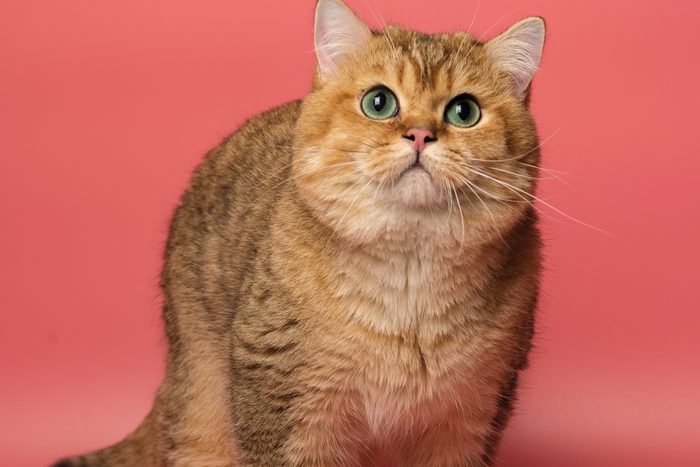
British Shorthair
There’s no point in denying it: The British Shorthair is over-the-top adorable with those big dreamy eyes, round head and stocky body. And if you see this cute cat breed as a kitten, you may very well lose your mind.
You’ll definitely want to keep a close eye on them if you let them outside because they are so easygoing and docile, they’re likely to attempt to make friends with a potential predator or kitty thief instead of run away. “Fitting with their jovial appearance is a laid-back and loving temperament, although they do also enjoy their time alone—almost too much at times!” says Dr. McCarthy. “And while the breed was prized for its physical strength and hunting ability, today the most they usually hunt is for their own food bowls.”
| Breed overview | British Shorthair |
| Height | 12–14 inches |
| Weight | 7–17 pounds |
| Life expectancy | 14–20 years |
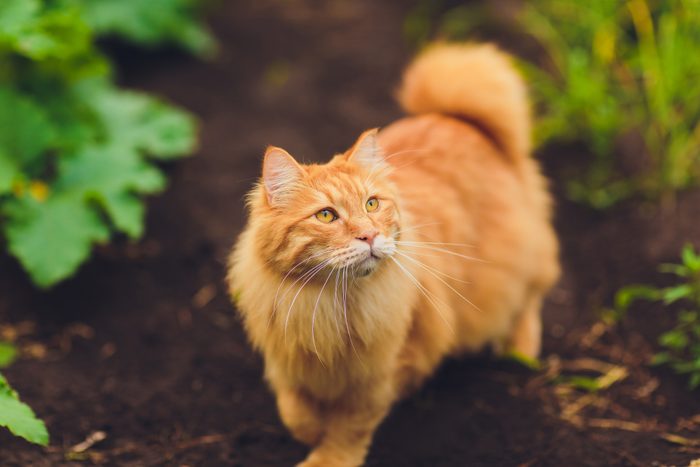
American Bobtail
“This relatively new breed from the 1960s is one of the most genetically diverse pure breeds and, as such, will be a robust and amazingly healthy addition to any family,” says Dr. McCarthy. Rumor has it that the American Bobtail is the result of a cross between an ordinary house cat and a wild bobcat.
Not only do they resemble bobcats in looks, where you’ll find mackerel tabby stripes, but they also probably inherited some hunting skills—albeit of the indoor variety. A genuine cat burglar, the American Bobtail loves to swipe shiny objects, so guard your twinkling trinkets. They’re outgoing and friendly with humans and other animals, and they’re also easily leash-trained and love to go for walks with their people. You won’t hear them meow much, but they will “talk” when they have something to say, notes Dr. McCarthy, and have even been known to trill, chirp and click when delighted. Seriously, does it get any cuter than that?
| Breed overview | American Bobtail |
| Height | 9–10 inches |
| Weight | 7–16 pounds |
| Life expectancy | 13–15 years |
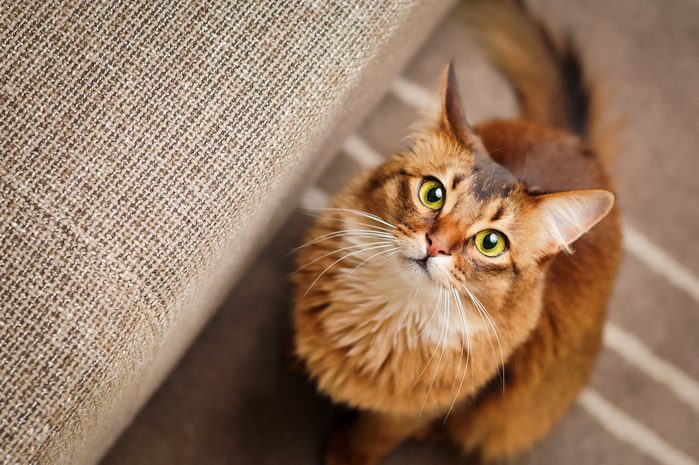
Somali
This gorgeous orange cat derived from the Abyssinian breed possesses the sweet face and the full, bushy tail of a fox. And the Somali is sneaky as a fox too. “While they don’t have opposable thumbs, they are known for their great manual dexterity (like monkeys) and can easily grab treats and toys, open cabinets and even turn on faucets when you’re not looking,” says Dr. McCarthy.
Cats are smarter than we think, and that’s especially true of the Somali, so it’s essential to kitty-proof your cabinets. And don’t forget to keep the bathroom and bedroom doors closed too. All that said, this highly intelligent breed is also affectionate and shameless in accepting all the attention you can give it. Bring on the cuddles!
| Breed overview | Somali |
| Height | 7–10 inches |
| Weight | 6–12 pounds |
| Life expectancy | 12–15 years |
About the experts
|
Why trust us
At Reader’s Digest, we’re committed to producing high-quality content by writers with expertise and experience in their field in consultation with relevant, qualified experts. We rely on reputable primary sources, including government and professional organizations and academic institutions as well as our writers’ personal experiences where appropriate. For this piece on orange cat breeds, Lisa Marie Conklin tapped her experience as an animal lover specializing in cat and dog content for Reader’s Digest, along with interviewing Mikel Delgado, PhD, a cat behavior expert with Rover and Matthew McCarthy, DVM, the founder of Juniper Valley Animal Hospital. We verify all facts and data, back them with credible sourcing and revisit them over time to ensure they remain accurate and up to date. Read more about our team, our contributors and our editorial policies.
Sources:
- Mikel Delgado, PhD, cat behavior expert with Rover
- Matthew McCarthy, DVM, founder of Juniper Valley Animal Hospital
- Science Focus: “Is it true that most ginger cats are male?”




















